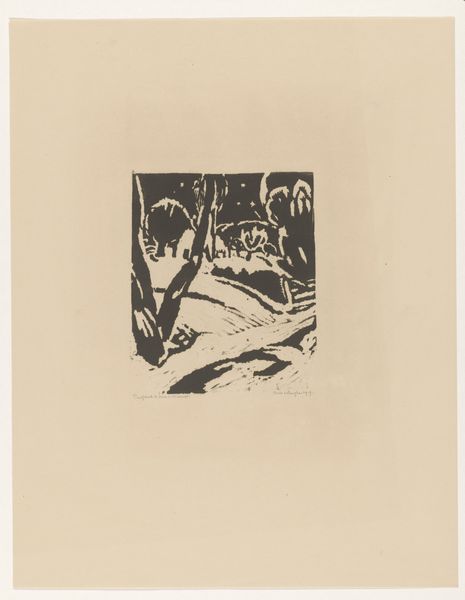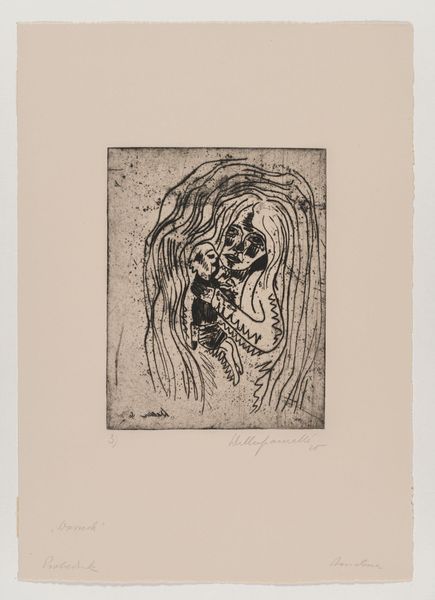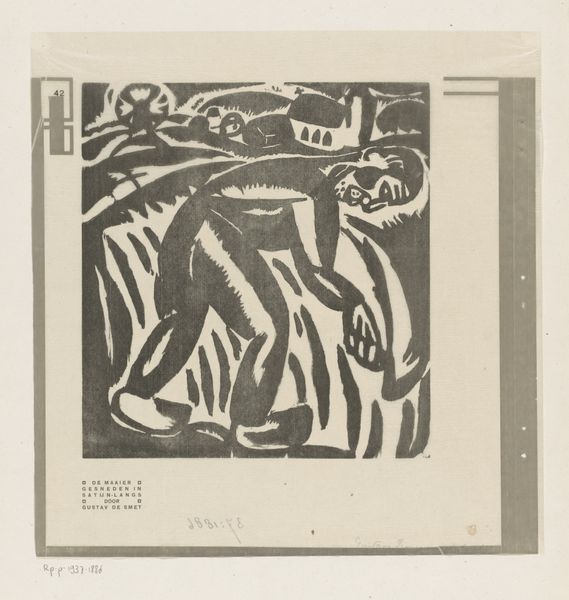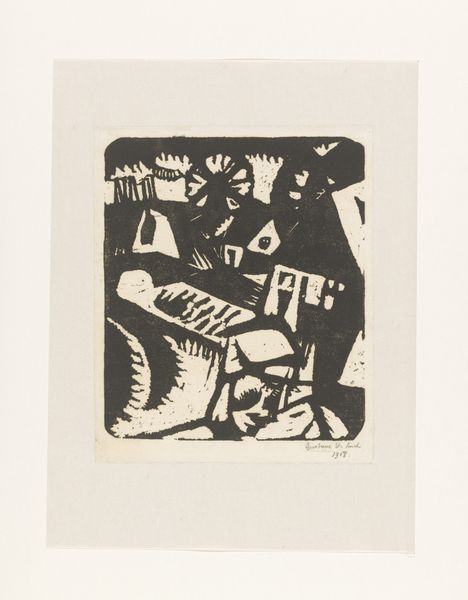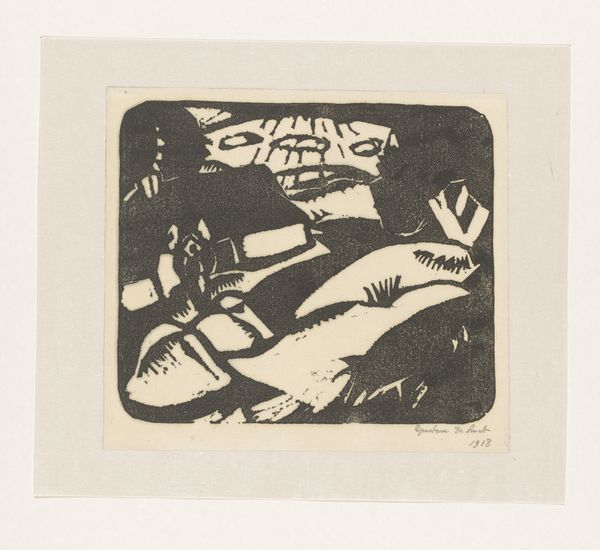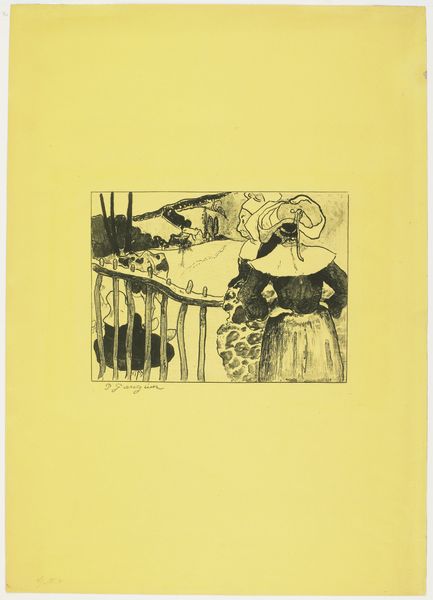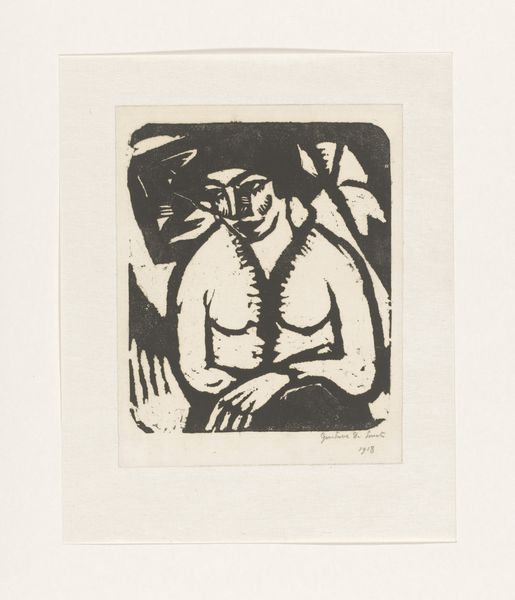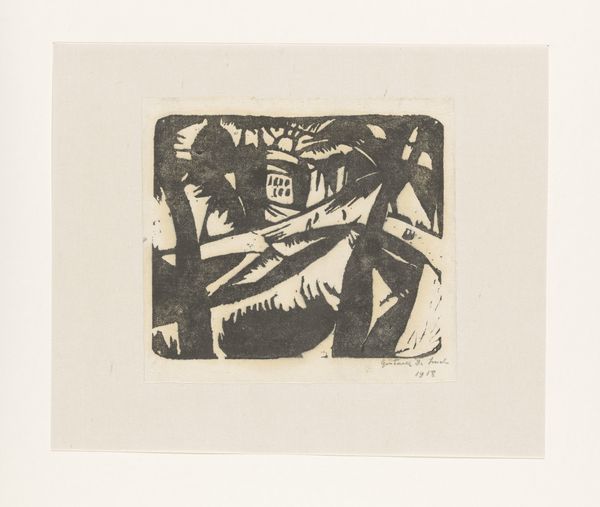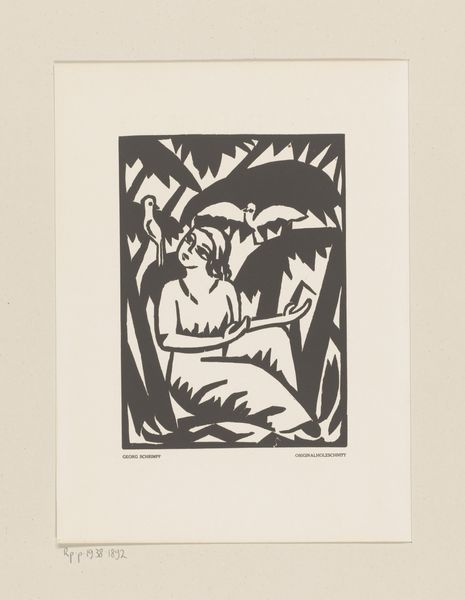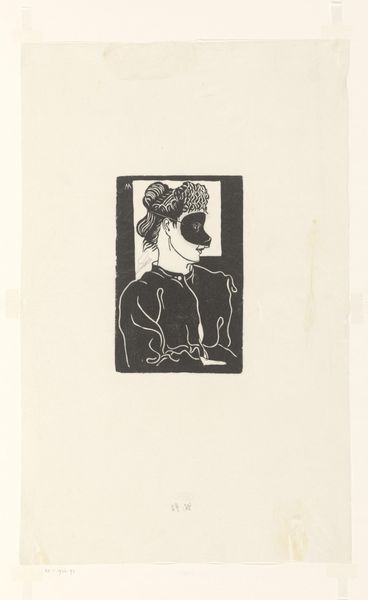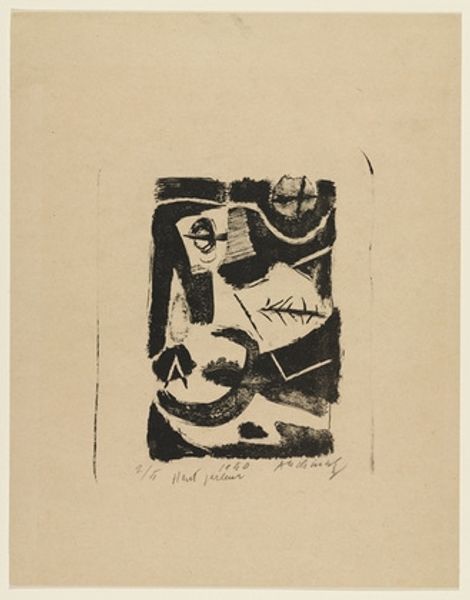
drawing, print, paper
clear focal point
drawing
egg art
paper
handmade artwork painting
fluid art
acrylic on canvas
white focal point
watercolour bleed
watercolour illustration
remaining negative space
watercolor
Dimensions: 250 × 200 mm (image); 554 × 454 mm (sheet)
Copyright: Public Domain
Curator: Well, well, look at this. Here we have Edvard Munch's "The Fat Whore," created in 1899. It's a print on paper currently residing here at The Art Institute of Chicago. Quite a striking piece. Editor: Striking is one word for it! The immediate impression is of discomfort, almost a confrontational stillness. The rough textures and dark indigo shades add to this kind of uneasy quiet. Curator: Absolutely. Munch was known for pushing the boundaries of printmaking. Consider the raw quality of the lines—how do you think they impact the image? It definitely challenges notions of high art and craft here. Editor: They convey a visceral energy, definitely not concerned with refinement. This piece, though small, speaks to broader anxieties about desire and class. Is it supposed to be grotesque? I keep coming back to those eyes. Curator: Some interpretations delve into the complex relationship Munch had with societal norms and the representation of women, exploring the means of creating this controversial figure of "The Fat Whore" from the context of the bohemian subculture during the late 1890's. It can also be seen as part of his larger "Frieze of Life" series exploring the themes of love, anxiety, and death. Editor: So the grotesque is part of the message—a rejection of polite society through distorted imagery, created with this medium that mirrors that same disruption... almost a deliberate ugliness reflecting psychological torment. Curator: Exactly. The means of production underscore that feeling. The woodcut technique itself is brutal. Also note the negative space—what do you make of the large border framing the figure? Editor: It heightens the claustrophobia! It feels trapped, exposed. It definitely brings to mind how marginalized women were rendered invisible in so many ways while paradoxically being hyper-visible and judged for their appearance. It mirrors the social structure. Curator: Precisely, and I feel we also come away sensing the labor. Each line painstakingly carved in its process. The stark composition speaks to that. Editor: To conclude, it's haunting to consider the layered implications of class, gender, and the materiality of trauma, all etched here... somewhat ironically given the work is entitled with those simple two words. Curator: Agreed. "The Fat Whore," more than just a title, an index into a complex social critique of Munch’s era as we reconsider how to view these subjects with contemporary perspectives.
Comments
No comments
Be the first to comment and join the conversation on the ultimate creative platform.
